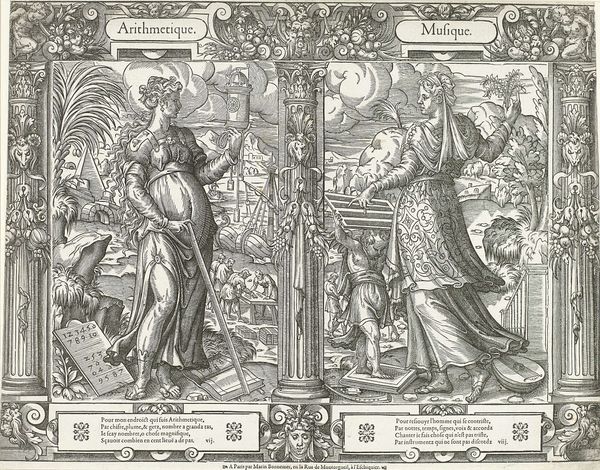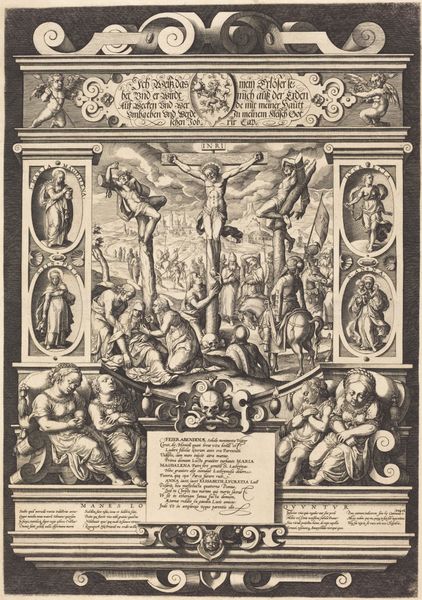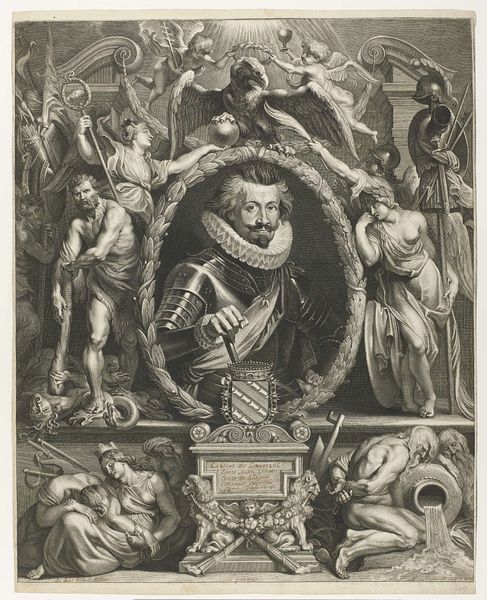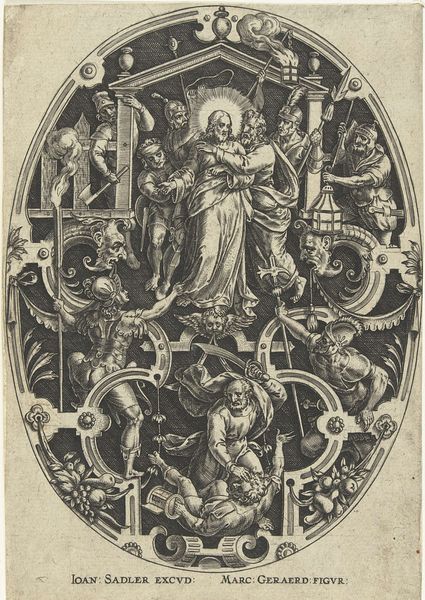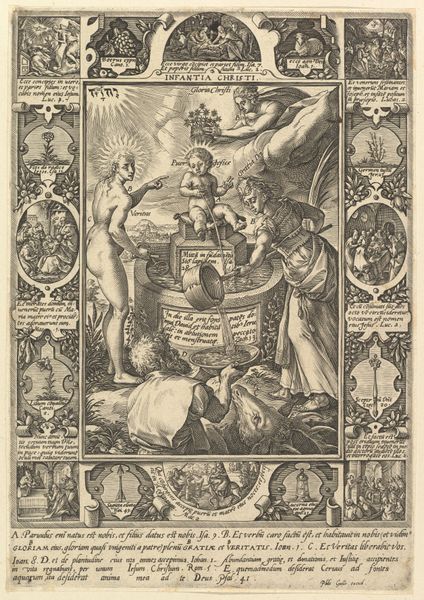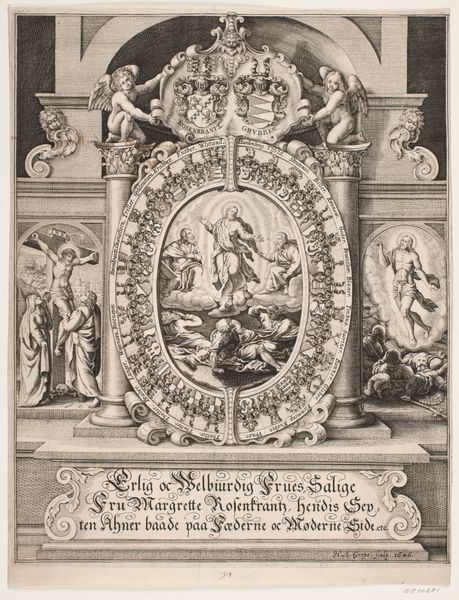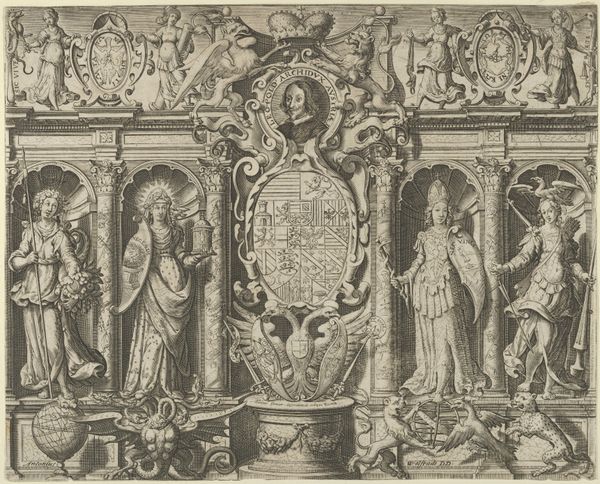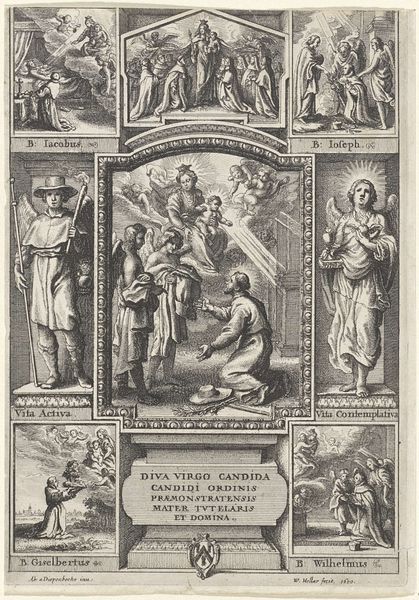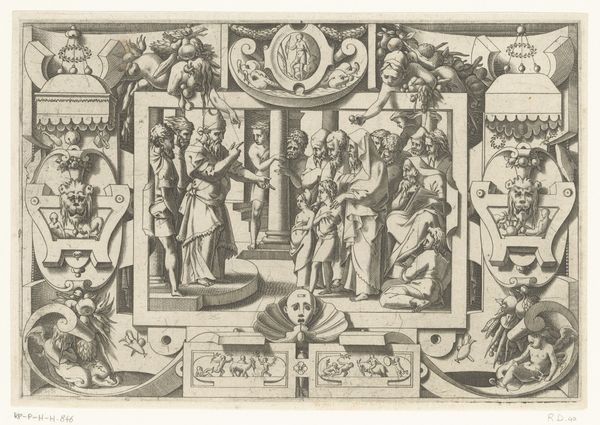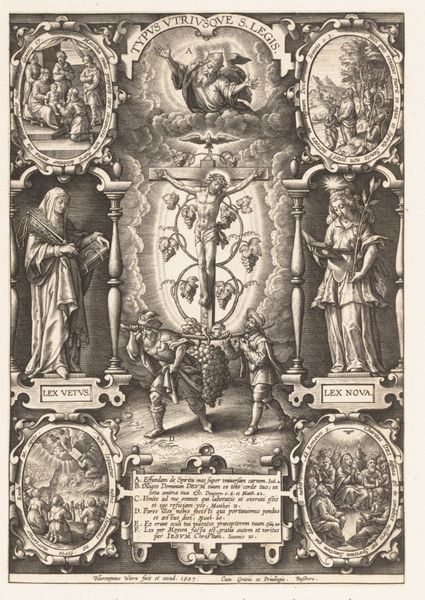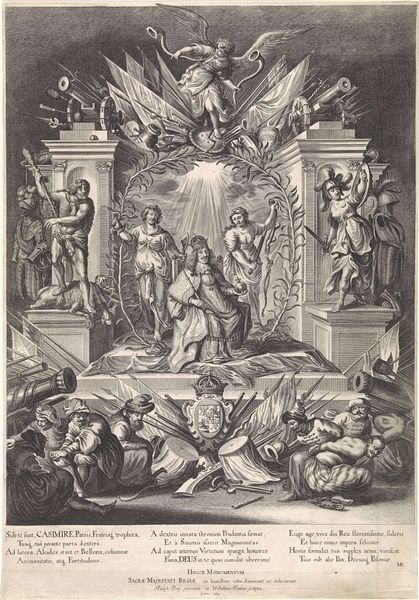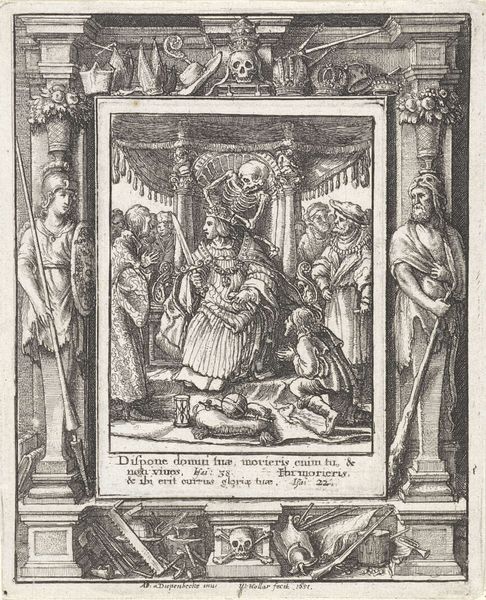
print, engraving
#
allegory
# print
#
figuration
#
geometric
#
line
#
northern-renaissance
#
engraving
Dimensions: height 362 mm, width 431 mm
Copyright: Rijks Museum: Open Domain
Curator: This is Jan Ditmaer’s engraving, “The Three Virtues: Faith, Love, and Hope,” dating to 1577. Look at the incredibly intricate line work; the hatching and cross-hatching create remarkable tonal variations in a monochrome print. Editor: It feels weighty and symbolic, and rather densely packed with imagery, doesn’t it? I see those three female figures dominating the center. What is their place in 16th-century Netherlandish society, would you say? Curator: Well, allegorically, they represent those three titular virtues, each identifiable through specific iconographic details. Faith holds the cross, Love is surrounded by children, and Hope gestures to heaven while grasping the tablets of the law. See how each of them, even with their differing gestures, are looking away from each other in their own distinct directions? Editor: Interesting that their placement and visual direction are distinct and, at the same time, intertwined by a collective narrative! Their poses strike me as almost theatrical. The opulence in their drapery, that complex allegorical composition! How might these figures have resonated within the context of the religious and political tensions of the Dutch Golden Age? Curator: Consider also the surrounding border. Note the smaller scenes encased within the ornamental frame, likely also allegorical. It reinforces the centrality of the virtues by situating them within a cosmological and theological framework. Editor: I find the contrast fascinating, where earthly struggles intertwine with aspirations for a higher power or existence. What kind of conversations, within a family, or a town square, might an image like this ignite at that time? Curator: It certainly provided visual reinforcement of social virtues through the visual and material qualities afforded by engraving. Look how finely wrought are their fingers. Editor: The material and form give a solidity, even an apparent timelessness, to values that, as we see, must be continually interrogated and adapted. It also poses important questions, of course. Like, how has that definition of "virtue" expanded since Ditmaer put burin to plate in the 1570s? Curator: Precisely! The density of Ditmaer's linework underscores a complex worldview of that era. Editor: Thank you, it offers a chance for productive engagement. I am now taking away fresh interpretations, after seeing this work with you.
Comments
No comments
Be the first to comment and join the conversation on the ultimate creative platform.
